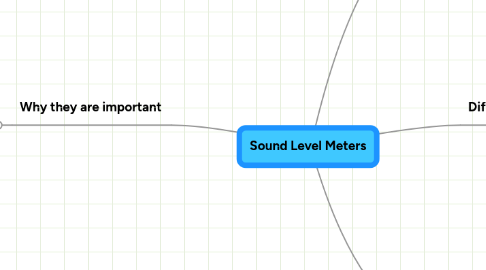Sound Level Meters
by Josh Schroedter


1. Why they are important
1.1. Noise Pollution
1.1.1. Effects on Humans
1.1.1.1. Cardiovascular Issues
1.1.1.2. Hearing Problems
1.1.1.3. Sleep Disturbances
1.1.1.4. Interference in Verbal Communication
1.1.1.5. Mental Health Problems
1.2. Perks for Using in OSH field
1.2.1. Quick Reading
1.2.2. Programmed to Meet OSH Standards
1.2.2.1. Slow Meter Response
1.2.2.2. A Scale
1.2.3. Actual Reading
1.2.3.1. Determine Time Weighted Average
1.2.3.1.1. Determines Daily Dose
1.2.4. Help Determines what Safety Measures should be taken
2. How they Work
2.1. Parts
2.1.1. Microphone
2.1.2. Preamplifier
2.1.3. Amplifier
2.1.4. Frequency Weighting Filter
2.1.5. Meter Response Circuits
2.1.6. Digital Readout
2.2. Measure Decibels
2.2.1. <70 Safe
2.2.2. >70 Hazardous
3. Features
3.1. Frequency Weighting
3.1.1. A Scale
3.1.2. C Scale
3.2. Response Speed
3.2.1. Fast
3.2.2. Slow
3.3. Types
3.3.1. 0 Most Technical
3.3.2. 1
3.3.3. 2 Most OSH use this
3.3.4. 3
3.3.4.1. Least Technical
